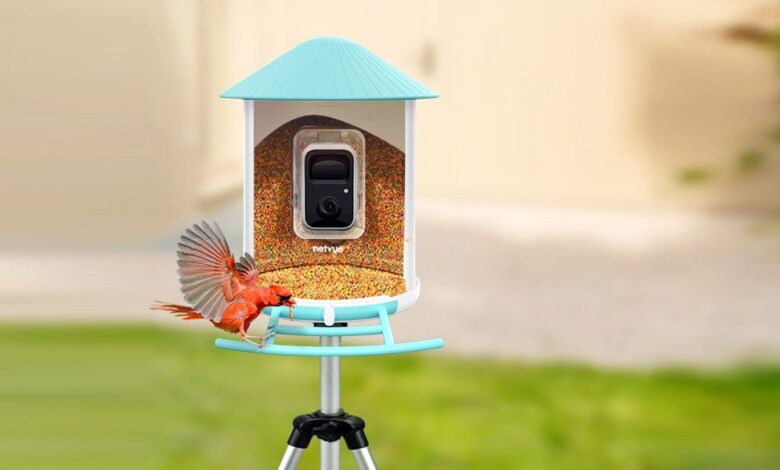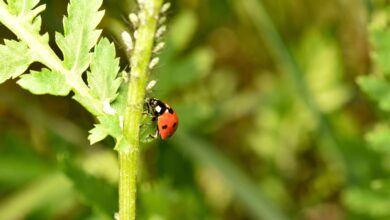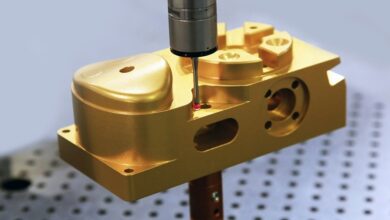Choosing the Right Bird Feeder Camera: A Comprehensive Guide to Features, Benefits, and Installation

Bird watching is a soothing and educational pastime that has grown in popularity, especially with the advancement of technology. One of the most significant innovations in this area is the bird feeder camera. These cameras allow enthusiasts to observe and record the behavior of birds up close without disturbing them. Whether you are a seasoned bird watcher or a beginner, choosing the right bird feeder camera can greatly enhance your experience. This guide will help you understand the key features, benefits, and installation tips to make the most of your bird-watching endeavors.
Key Features to Consider
When selecting a bird feeder camera, several features are critical to ensuring you capture the best possible footage. Here’s what to look for:
1. Video Quality
Video quality is paramount for bird feeder capturing clear, detailed images of birds. High-definition (HD) cameras are essential, with 1080p resolution being the standard for most bird feeder cameras. For those seeking even sharper footage, some models offer 4K resolution. High video quality allows you to observe fine details, such as feather patterns and colors, which are crucial for identifying species and appreciating their beauty.
2. Field of View
The camera’s field of view (FOV) determines how much of the area around the feeder is captured. A wide-angle lens is beneficial because it allows you to monitor a larger area, capturing not just the birds at the feeder but also those approaching or leaving. A 120 to 140-degree FOV is typically sufficient for most setups, ensuring you don’t miss any activity.
3. Motion Detection and Notifications
Motion detection is a vital feature that ensures the camera starts recording only when there is activity, saving storage space and battery life. Advanced models can send real-time notifications to your smartphone, alerting you whenever birds arrive at the feeder. This feature allows you to check in on the live feed or review recorded footage at your convenience.
4. Night Vision
Many bird species are active at dawn or dusk, making night vision an important feature. Infrared (IR) night vision enables the camera to capture clear footage in low light or complete darkness, allowing you to observe nocturnal behavior or early morning visits.
5. Weatherproofing
Since bird feeder cameras are used outdoors, they must be able to withstand various weather conditions. Look for a camera that is weatherproof or waterproof, bird feeder camera ensuring it remains functional through rain, snow, and heat. A well-sealed camera will have a longer lifespan and provide reliable performance year-round.
6. Connectivity and Storage
Wireless connectivity is another crucial aspect to consider. Wi-Fi-enabled cameras allow you to access live feeds and stored footage remotely via a smartphone app. Cloud storage options are often available, though some cameras also support local storage through microSD cards. Evaluate your storage needs and choose a camera that offers enough capacity for your desired level of monitoring.
Benefits of Using a Bird Feeder Camera
Bird feeder cameras offer numerous benefits that enhance the bird-watching experience:
1. Non-Intrusive Observation
One of the primary advantages of using a bird feeder camera is the ability to observe birds without disturbing them. Cameras allow you to capture natural behavior, providing valuable insights into feeding habits, social interactions, and species diversity. This non-intrusive observation is particularly beneficial for studying shy or rare species that may be difficult to approach.
2. Educational Opportunities
Bird feeder cameras are excellent educational tools for both children and adults. They offer a close-up view of birds that is often difficult to achieve with binoculars or the naked eye. Watching the footage can teach you about bird identification, behaviors, and migration patterns. It’s also a great way to introduce children to the wonders of nature.
3. Documentation and Analysis
For bird watchers who enjoy documenting their observations, a bird feeder camera is invaluable. High-quality footage can be analyzed to identify species, track visitation patterns, and even contribute to citizen science projects. Over time, you can build a visual record of the different birds that visit your feeder, creating a valuable archive of local biodiversity.
4. Sharing the Experience
Many bird feeder cameras offer live streaming capabilities, allowing you to share your bird-watching experiences with friends, family, or the broader online community. Whether through social media or dedicated platforms, sharing your footage can help raise awareness about bird conservation and inspire others to take up bird watching.
Installation Tips for Optimal Performance
Proper installation is key to getting the most out of your bird feeder camera. Here are some tips to ensure you capture the best possible footage:
1. Choose the Right Location
Select a location that is frequented by birds, preferably near trees, shrubs, or other natural cover. Ensure the feeder is in a spot that is easily visible from your chosen camera angle but not too exposed to predators or harsh weather. Avoid placing the feeder too close to windows or reflective surfaces, as these can confuse or harm birds.
2. Mount the Camera Securely
Stability is crucial for clear footage. Mount the camera securely to avoid movement caused by wind or other environmental factors. Use a sturdy bracket or mount designed for outdoor use, and make sure the camera is positioned at the right height and angle to capture the feeder and surrounding area.
3. Optimize Camera Settings
Adjust the camera settings to suit your environment. For instance, if you live in a region with varying light conditions, ensure the camera’s exposure settings are optimized for both bright and dim light. If your camera has adjustable motion sensitivity, set it to detect bird movements without being triggered by swaying branches or other non-bird activity.
4. Regular Maintenance
Keep the camera lens clean and free of debris, such as dust or water droplets, to ensure clear footage. Regularly check the camera’s battery (if applicable) and ensure that the feeder is well-stocked and clean to continue attracting birds. Periodic maintenance will help you avoid technical issues and ensure the camera continues to perform optimally.
Conclusion
Choosing the right bird feeder camera involves considering various features, understanding the benefits, and following proper installation practices. With the right camera, you can capture stunning footage of birds in their natural habitat, enhancing your bird-watching experience and deepening your connection with nature. Whether for personal enjoyment, educational purposes, or contributing to bird conservation efforts, a bird feeder camera is a valuable tool that brings the beauty of the avian world closer to home.



